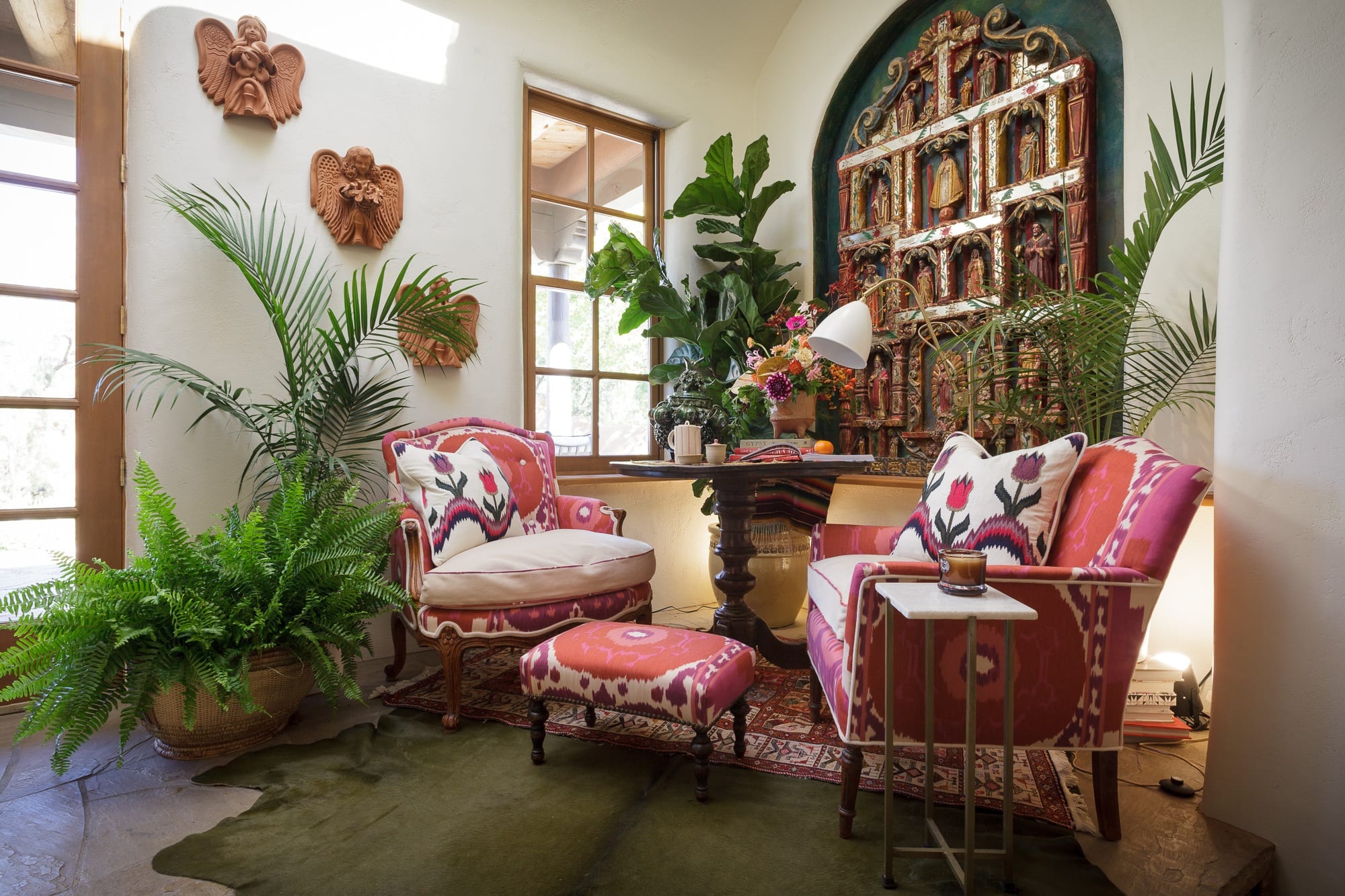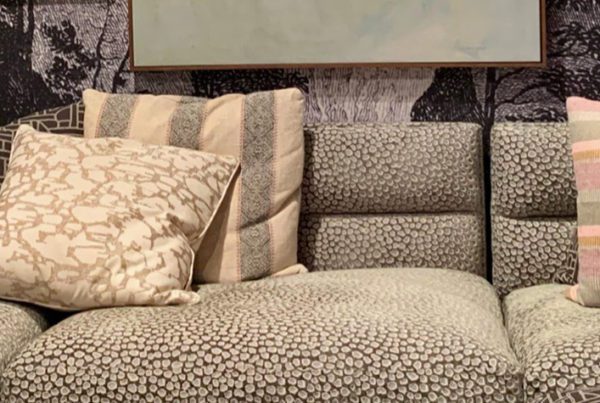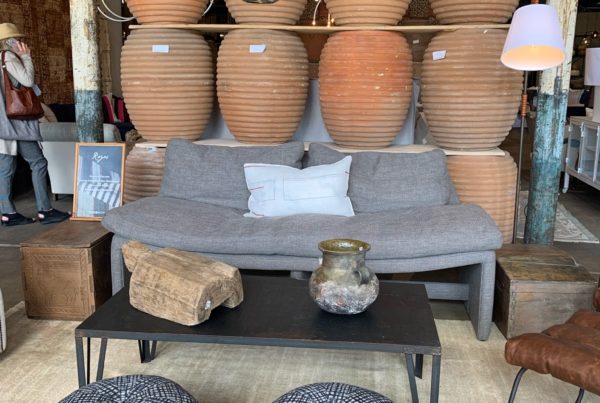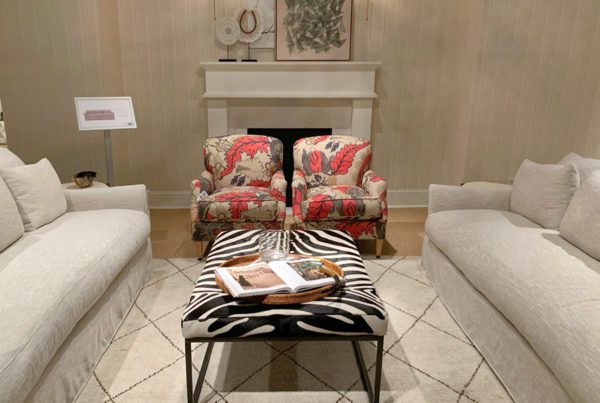A Simple Process for Figuring out Your Own Style
Having Emma working with us this past month has reminded me how challenging it can be for first-time designers (or their clients!) to really refine their sense of style.
It can be so overwhelming to decide what you like and what you don’t when first setting out on the design path. You can narrow that focus using a few simple techniques. Here’s the way I like to approach it, based on what I saw from our perspective working with Emma.
1 – Get Inspired
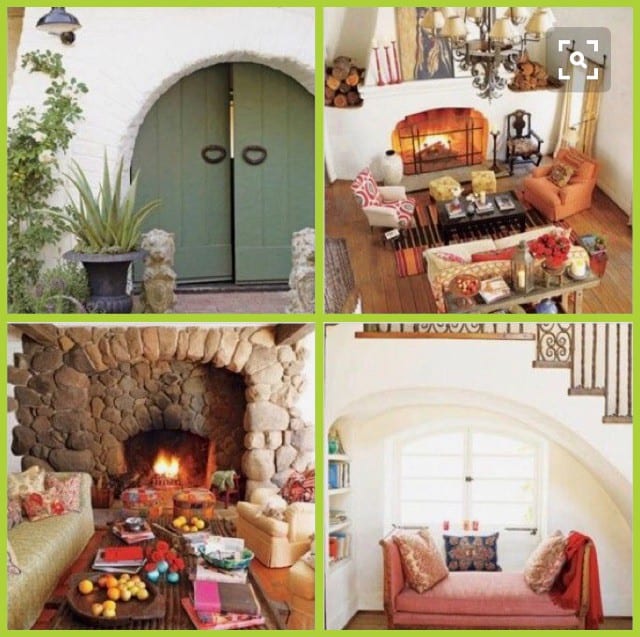
The first and most important step is to get a little introspective and really decide what you like. There are tons of opportunities to do this every day, from looking at style magazines to browsing Pinterest to paging through fabric samples!
Part of this process is also recognizing what you don’t like, and why. For example, you could really be drawn to clean, white, highly-polished spaces with fancy rugs and lots of glass to polish. But that might not be how you want to live your day-to-day life.
In a situation like this, it’s critical to be able to look past the objects and colors and see the underlying concepts: I like that it’s light, bright, and clean…but I wouldn’t want to let my three-year-old in there or actually put my feet up on the coffee table! Thinking about the reality of how you’ll function in a space can definitely help you define your design aesthetic.
With Emma, we took her through this inspiration step using a client’s design process, and just kind of watched. I had her put together a fabric scheme for herself, and it was fun to watch her pull things that she liked – just like I’d have a client do with their inspiration board.
Even if Emma’s fabrics (or my client’s inspiration pieces!) don’t necessarily work as a whole right away, it’s a critical part of the process to see what they’re drawn to. This is the part where you have to be really clear with yourself about what you actually want, instead of trying to fit your own ideas into someone else’s expectations for what a space should become.
2 – Get Refined

After we have a collection of ideas and inspiration, we’ll go through the process of translating those ideas into a space and thinking about what will look good using a combination of those choices.
For a client, this means I’m ready to help pare down or elevate their original ideas into a cohesive scheme that will work best in their space. I’m basically refining their aesthetic in a way that’s honest to who they are, how they function, and the architecture of where they’re living.
With Emma, I could see she gravitated towards a combination of colors, flowers, and some other more muted and softer things. We helped her get some perspective on how these pieces would work together, so she could narrow them down to create a really nice balance.
If you’re not working with a designer, the key here is being able to take a step back, look at what’s naturally in your house, and consider what appeals to you. Do you pick up shiny things at a boutique? Do you like the thrift shop hunt? What about the ease of choosing things that are already at a big box store? Once you recognize this, you’ll start to see patterns emerge that you can build on.
Again, it’s hard not to have any preconceived notions about “what looks good” or what you should draw you in, especially because there are just so many sources of design inspiration nowadays! Don’t forget all that honest work you did in the inspiration phase above – the more you can stay true to your initial ideas and style, that more authentic your whole design will ultimately feel.
3 – Get Cohesive
After you have some idea of what things inspire you and how they can work in a space, it’s time to start thinking about the specifics: space planning, color combinations, furniture and accent pieces, and how all those things will scale together.
There’s this big idea in design that “if you love it, it will work.” I don’t necessarily agree with that. Your choices might work somewhere in the house, but not always where or how you anticipate! This is the step where you determine how your refined inspiration translates into real design.
Using space to tell your story and capture a certain feeling might not incorporate the exact fabrics or furniture you thought. Figuring that out is a huge part of the overall scheme. With Emma, we did some pushing and pulling with her fabrics to find something that she would really love as a whole, which was so fun!
With my clients, we’ll use our experience plus their inspiration to create a specific plan that works well as a whole. Since we’ve designed in different spaces and studied a lot of rooms, I’m at the point now where I can make most things work. But it can still be an exciting challenge to combine unique pieces the client wants within a certain aesthetic! This can sometimes change a design plan drastically, but it also keeps a room developing in a really interesting and organic way while we’re working.
4 – Get Specific

For DIYers, the best advice I have here is to focus on creating purposeful vignettes that can easily take a space from looking “messy” to looking “designed.” A stack of books and magazines on your coffee table can simply look disorganized…or it can look really beautiful when you incorporate a candle, a tchotchke, and some flowers to layer the whole scene nicely.
I tend to be symmetrical or geometric with my vignettes, but there’s a simple trick to making vignettes look great! If you look at a mountain range, you’ll see all the natural ups and downs and differences in scale; try to mimic this organic rise and fall in your spaces.
To make books look great on a shelf, for example, you can either come up to a point, or come down from two points on the edge and meet lower in the middle. There are tons of specific ways to do this, but basically you want design that undulates and mimics natural landscape: taking the everyday things we use inside and channelling the natural beauty of the outdoors.
I hope you can use these steps to find your inspiration, refine your style, and create beautiful spaces when you’re designing your next project!


